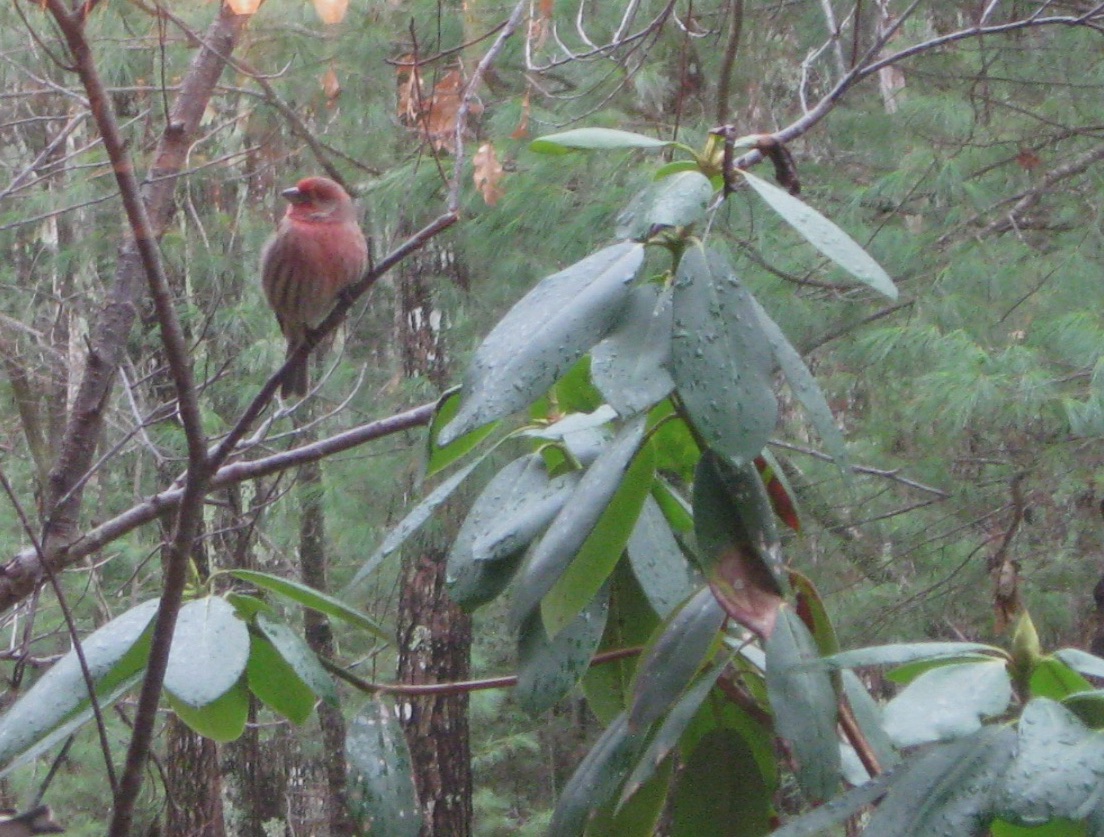
This is not a great picture, but it serves to make identification easier. The tricky thing about House Finches is that they look a lot like Purple Finches. Here’s a guide to help distinguish House Finches from Purple Finches and Cassin’s Finch.
As a kid in New Hampshire in the 1970s and early 1980s I regularly saw Purple Finches. House Finches had not yet become commonplace. Now, in Maine, I rarely see Purple Finches and see House Finches pretty much all winter long (though having said that, I’m not always sure that I’m looking at a House Finch and not a Purple Finch, particularly with the females). House Finches are in fact a fairly recent arrival to this part of the U.S.
The House Finch was originally a bird of the western United States and Mexico. In 1940 a small number of finches were turned loose on Long Island, New York, after failed attempts to sell them as cage birds (“Hollywood finches”). They quickly started breeding and spread across almost all of the eastern United States and southern Canada within the next 50 years.
The House Finches arrived in force a couple of weeks ago, along with a fresh infusion of American Gold Finches. I’ve seen more than ten at a time fairly often; once, I counted fifteen individual House Finches; oddly they seem to prefer the black oil sunflower, and the Gold Finches love the two finch socks.